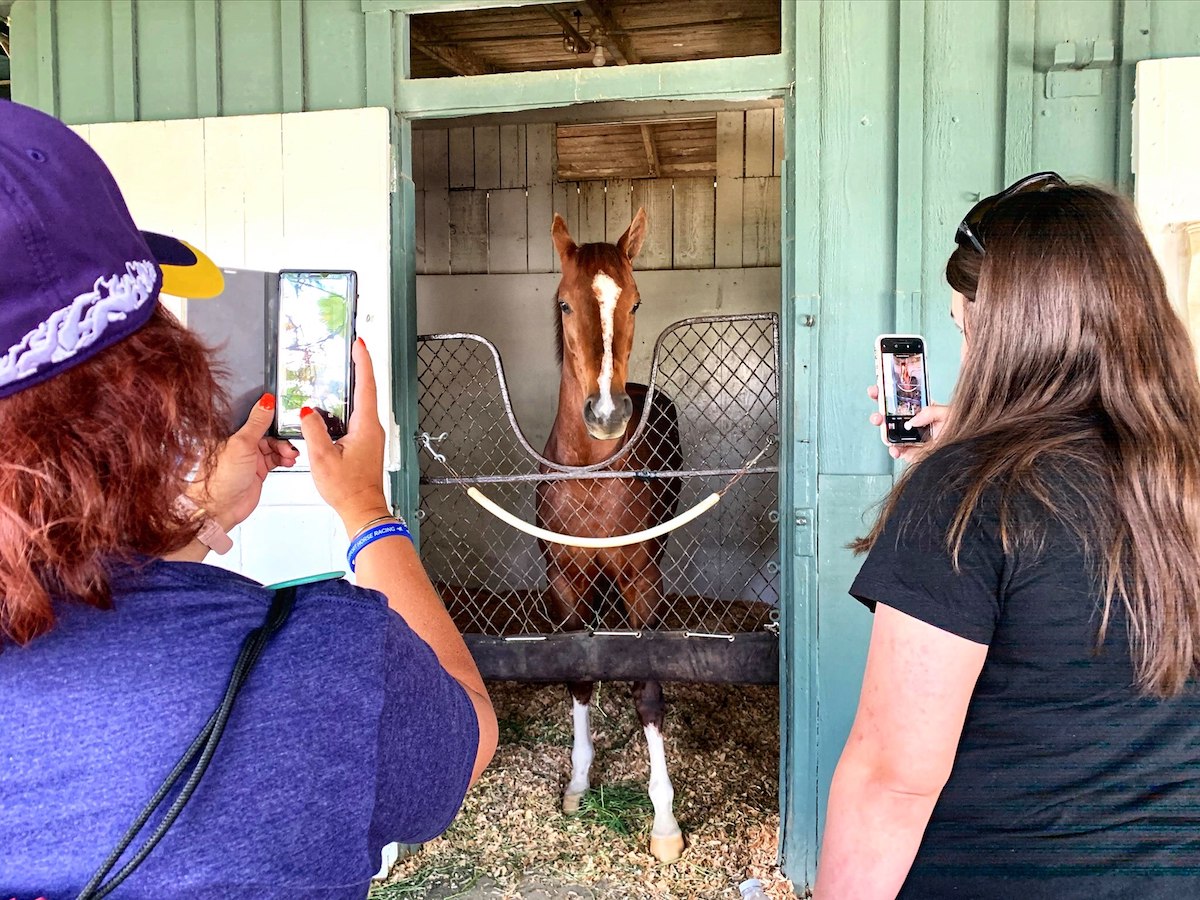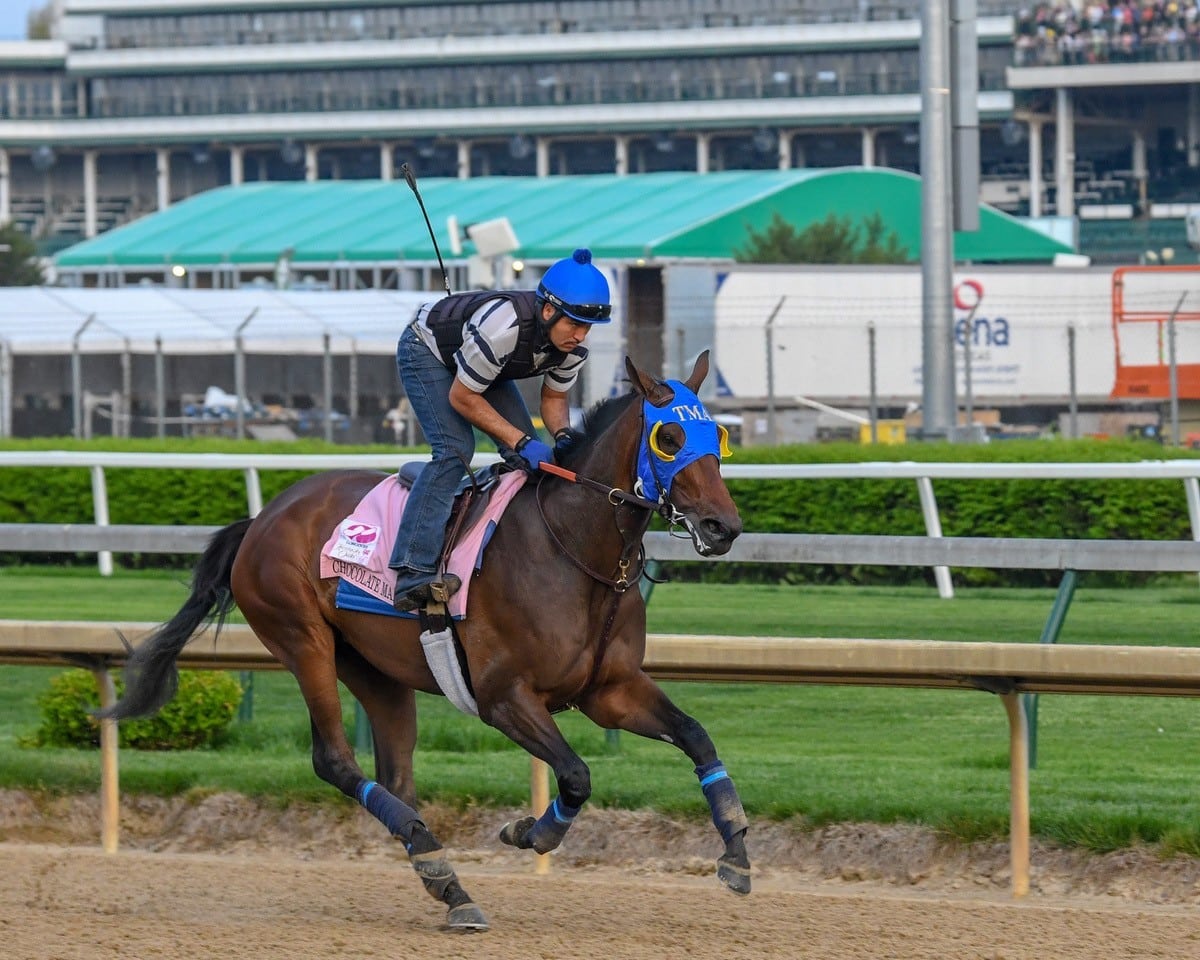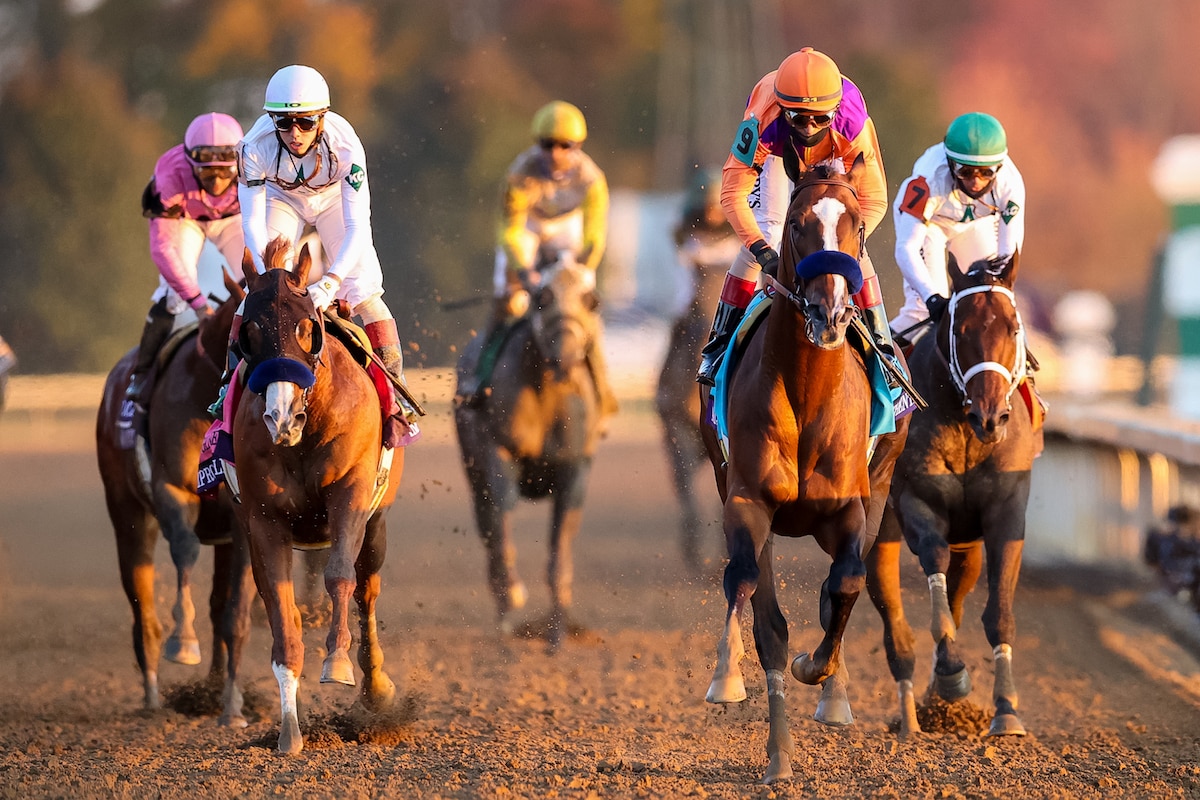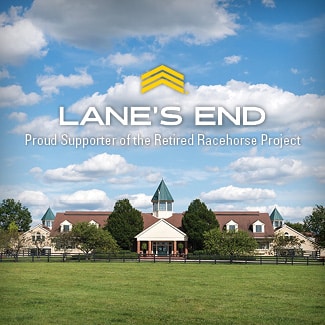Experience the joys of racehorse ownership through partnerships and microshares

Partnerships sell the fun of racehorse ownership. MyRacehorse, for example, hosts parties, shares videos and arranges for owners to visit their horses at the track. Courtesy MyRacehorse
What if you could own part of a racehorse for as little as $35? Would you do it? That’s the question many racing partnerships are asking as they experiment with different ways to open up racehorse ownership to the rest of us.
As anyone who owns horses knows, it’s expensive to feed and house them. The more conditioning and professional training they need, the more it costs, whether it’s a hunter/jumper, a reiner or a racehorse.
Historically, primarily wealthy people owned racehorses — hence, the “sport of kings” — and rarely shared that ownership with others. Occasionally, people went in together on a horse, such as when two couples — Mickey and Karen Taylor and Jim and Sally Hill — owned 1977 Triple Crown winner Seattle Slew.
But a funny thing happened, especially as social media proliferated in the early 2000s. Racehorse owners discovered that it was far more fun to put a whole bunch of people together on a horse, throw a party every time it ran and jam into the winner’s circle if the horse won.
Amanda and Ron DaBruzzo’s Nine Thirty Racing, in the Chicago area, evolved that way.
“It started as friends of my husband and my business partner from their work,” Amanda says. “We used to take people to Keeneland (in Kentucky) for the weekend, or they’d come to Chicago to go to Arlington.”
Nine Thirty Racing has grown to the point that it now comprises about six different funds for partnerships, with a total of about 55 people and 10 to 12 horses. The DaBruzzos’ love of the horses extends to their aftercare; Amanda is the treasurer for the Retired Racehorse Project.
One of their racehorses, Driven by History (Two Step Salsa — Mami Nena, High Yield), might compete in the 2021 Thoroughbred Makeover. Now 5, he earned $212,747 on the racetrack. Nine Thirty Racing was also a partner in Chocolate Martini, a filly who earned $502,976 and ran in the 2018 Kentucky Oaks and is now a broodmare in Australia.
Nine Thirty Racing is pretty typical of a racing partnership. A few people invest in each horse or a fund that then buys several horses. Some partnerships bill additionally for expenses. The DaBruzzos, however, try to build in expenses upfront.
“We create funds of different sizes,” Amanda says. “We have anything from about $5,000 to about $20,000 for each individual person. Some funds are more because they have multiple horses. We have various levels for different opportunities.”
MyRacehorse has gone even further. Michael Behrens, the founder and CEO, wanted to price racehorse ownership so it could be affordable for just about everyone. MyRacehorse began in mid-2019 and in just over a year won the Kentucky Derby and Breeders’ Cup Classic with Authentic.
While it cost only $206 to own a piece of a Derby winner — expenses are also built in upfront — in actuality each person owns a microscopically small part of Authentic. In fact, Behrens calls MyRacehorse investments “microshares.”
Do the math: MyRacehorse bought 12.5% of Authentic after he had won three races and was a Derby contender. The colt has three other major partners, primarily B. Wayne Hughes’ Spendthrift Farm. MyRacehorse sold 12,500 microshares to 5,314 people (some bought multiple microshares), which make up the share of Authentic the partnership owns.
“If you want to come in for just the experience and the journey, then there’s no reason you shouldn’t come in for a super minimum,” says Behrens.

Racing Partnership Nine Thirty Racing now comprises 55 people and 10 to 12 horses. They partnered in 2018 Kentucky Oaks contender Chocolate Martini. Mathea Kelley photo, courtesy Jen Roytz
The cost of microshares varies depending on the horse. MyRacehorse this fall planned to offer microshares in a yearling colt for only $35. The colt is by Into Mischief, the same sire as Authentic, and will be trained by Bob Baffert, who trains Authentic. The colt sold for $450,000 at auction this past summer.
So what does a microshare buy you? Technically, you reap your share of whatever profits the horse makes, including what he is worth as a breeding prospect after his racing career is over. But even if a horse wins a race like the Kentucky Derby, a microshare percentage of the profit isn’t going to be much, especially after expenses.
Cold, hard cash really isn’t the point. These partnerships are selling the fun of racehorse ownership. That includes bragging rights. The owners of all those microshares get to say they own a Kentucky Derby winner — and boy did they brag about it on social media.
“People were uploading their reactions to watching the race,” says Behrens. “You have thousands of people who got to experience what it’s like to enjoy horse racing, and they are sharing it with their friends. These videos are priceless. There were people screaming, jumping over couches, and one guy jumped in a pool.”
Microshare owners can participate in parties at the racetrack (when COVID-19 restrictions allow) and receive frequent updates via an app on their horses. That could include videos of the horse training and interviews with the trainer. Behrens also arranges visits to see the horse at the racetrack as space permits.
“There are Facebook groups for every horse,” says Behrens. “We try to throw live watch parties. We’ll have special guests — maybe prerecorded video from trainers and jockeys. We’ll invite handicappers on to talk about it, usually about a half-hour of content leading up to the race.”
Aftercare also factors into racing partnerships. In the case of a horse such as Authentic, aftercare is assured. Being a very successful colt, he will go on to be a breeding stallion. Spendthrift Farm already stands many top stallions, including Authentic’s sire, Into Mischief. Like Chocolate Martini, mares often go on to broodmare careers.
For geldings or less successful horses, partnerships explore a variety of methods to find good homes. MyRacehorse has worked with several retirement agencies to place their horses.
“We write a right of first refusal into all our contracts,” says Behrens.
It’s an important point, because MyRacehorse is often a minority owner. If another partner just wants to sell, MyRacehorse can buy out the partner to find the horse a good second home.
“Often the new owners will share what the horse is doing on social media,” Behrens says.

5,314 people own microshares in Kentucky Derby and Breeders’ Cup Classic winner Authentic (second from right) through MyRacehorse. Courtesy Wendy Wooley/Eclipse Sportswire/Breeders’ Cup
Sometimes the horse’s new career attracts a bigger following than the initial one as a racehorse.
In some cases aftercare includes raising funds. For example, when Authentic ran in the Preakness Stakes, in Maryland, MyRacehorse had 12 tickets available for in-person attendance. They did a random draw among the microshare owners for 10 of those spots and donated two to aftercare organizations. MyRacehorse conducted an online auction, raising nearly $10,000 for the two aftercare groups.
In the future some of the microshare owners might rehome the horses themselves. Behrens estimates that about 100 people have shown interest in providing homes following a horse’s racing career.
People in racing partnerships are discovering the fun of owning a horse, whether it’s a microshare in something like MyRacehorse or a larger percentage in more traditional groups such as Nine Thirty Racing. It goes far beyond the potential money they could earn from their investment.
“The sentiment is always just joy,” says Behrens. “They love their horse. They’ll post a picture of them going into the stall and cuddling with their horse.”
These owners might not see their horses every day and don’t own them outright. But they are still discovering that human/horse bond that is, in a word, magical.
This article was originally published in the Winter 2021 issue of Off-Track Thoroughbred Magazine, the only publication dedicated to the Thoroughbred ex-racehorse in second careers. Want four information-packed issues a year delivered to your door or your favorite digital device? Subscribe now!

